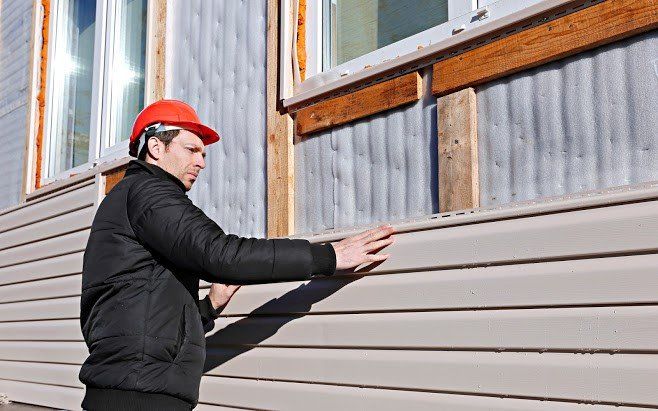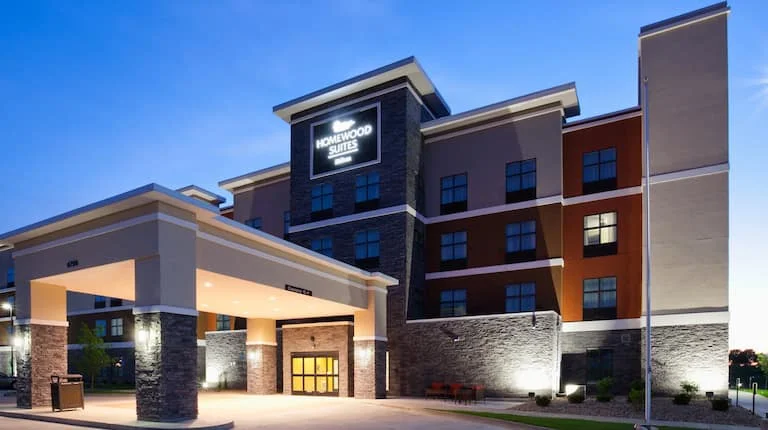How to Choose the Right Siding for Your Home
Siding Columbia MO is a decorative and functional building material that protects buildings from the elements. It can also help improve the structure’s appearance and increase its value.
When choosing siding, homeowners should consider the cost, durability, and aesthetic appeal. Here are some factors to remember: fiber cement is a great choice for homeowners because it is long-lasting and resists termites, fire, and rot.

Siding has several purposes: beautifying a house and protecting its interior structure and possessions from harsh weather elements. A new siding can be an investment that lasts for years, saving on repair and replacement costs. However, not all sidings are equal; some can be more expensive than others. This is especially true of long-lasting options like brick and natural stone among the longest-lasting siding choices.
The cost of a new home’s siding depends on how much cladding is installed and the type of material used. Using your home’s equity to fund new siding can make the initial outlay less expensive, and many lenders offer quick prequalification processes. The average lifespan of a new type of siding is another factor to consider, as it can help determine the cost-benefit ratio. While vinyl siding lasts only 30 years, stone and brick can last 100 or more.
One of the cheapest types of siding is vinyl, which is available in a wide variety of colors and can be made to mimic other materials. It is also non-flammable and requires little maintenance. According to Forbes, another popular choice is fiber cement, which can be painted and comes in various textures. It is one of the best low-maintenance sidings and resists termite damage. Another low-maintenance option is stucco, which can be textured in many ways and comes in tinted finishes, so it does not need to be repainted.
If you prefer the look of wood siding, it can be more expensive, but this cladding is durable and requires less maintenance than other types of siding. It is available in several styles, including board and batten, channel groove, and tongue and groove. Some more durable wood types are cedar, redwood, and cypress. These types of wood are treated with resins and zinc borate to make them more resistant to rot, moisture, and termite.
Brick and natural stone siding are some of the most expensive sidings, but they are a good investment that can last for generations. These cladding options require very little maintenance, are highly insulating, and can add significant value to a property. However, they are only ideal for some climates, and the energy-intensive nature of brick can be problematic in hot temperatures.
Durability is one of the most important factors when designing a new product. It determines how long a product can be used before replacing it. It also influences the costs of maintenance, repair, and replacement. It is influenced by some factors, including the product’s repairability and ability to withstand damage.
It’s easy to overlook durability when planning a new product, but it is critical for success. The right materials and manufacturing processes will help to ensure that your product has the proper durability, which is essential for consumer acceptance. Durability is also key for protecting the integrity of the environment.
Durable means “lasting or continuing in the same state by resistance to causes of change, decay, or dissolution.” It is an adjective that describes something that has the power to withstand stress or pressure. Examples of this include a building, a machine, or a food item.
The appearance of siding is determined by its texture, color, and pattern. It also reflects the environment in which it is installed. It should complement the home’s architectural style and blend in with other exterior elements, including landscaping and hardscape features. In addition, it should withstand the conditions to which it will be exposed. While aesthetics are important, it is also necessary to consider maintenance requirements and energy efficiency. For example, darker colors absorb heat and require more frequent cleaning. On the other hand, lighter colors reflect heat and are easier to maintain.
Aside from the visual appeal, the color of a siding project can also impact a house’s energy efficiency. Dark colors are generally more effective at absorbing heat and maintaining thermal comfort than lighter colors. In addition, they provide greater visual contrast against the elements and can help highlight textures and details.
Identifying the type of siding on your home is important for maintenance, repairs, and future projects. A few different methods can be used to uncover the mystery, including visually inspecting it, measuring its thickness, and performing a burn test. In addition, contacting the manufacturer and consulting with a professional can provide expert insights.
Some of the most common types of siding include wood, aluminum, and vinyl. Wood siding is available in various shapes, sizes, and textures. It can be installed in overlapping horizontal rows or “courses” to create a clapboard, weatherboard, or bevel siding look. It can also be installed in shiplap, a method that allows the narrow edge of one course to fit snugly beneath the wider bottom of the next.
Choosing the right color can enhance the beauty and value of your home. A good place to start is by identifying the architectural style of your house and exploring online resources and physical samples. Choosing a color that coordinates with the front door, trim, shutters, and other accents is important to create a cohesive appearance. Neutral or classic colors create a polished look and can complement various architectural styles.
Siding is not just for appearance; it also provides a protective covering for the walls of a house. It helps to shield structures from harsh weather conditions like extreme heat and cold, heavy rains, and strong winds. It can even reduce energy costs by keeping a structure warmer in winter and cooler in summer. The durability of a home’s siding can also help to increase its value, making it a smart investment for homeowners.
There are many different types of siding, each with its maintenance requirements. Some siding requires regular painting or staining, while others are more durable and require little maintenance. It’s important to weigh the cost and durability of each type of siding before deciding which one is right for your home.
Homeowners can choose wood, vinyl, fiberglass, or fiber cement siding. Each type has its advantages and disadvantages. For example, vinyl is inexpensive and low-maintenance but can become brittle. Wood is expensive but can add a lot of value to a home. However, it can be difficult to maintain and is prone to mold growth and sheath rot.
To determine the amount of siding needed to cover your house, start by measuring all the exterior walls that need to be sided. Use a tape measure to measure the height and width of each wall. Once you have the measurements, you can begin to calculate the total area of each wall in square feet. It would be best not to deduct windows and doors from this number, as they will be covered later in the process.
To avoid overestimating the amount of siding needed, you should begin by measuring all of the rectangular walls in your home. Then, calculate the total area of each wall by multiplying its length by width. Take the total area of each rectangular wall and write it down. Then, you can move on to the next step by determining the areas of all non-rectangular walls and adding them to your list. You should also include all the window and door trim areas on your list.

